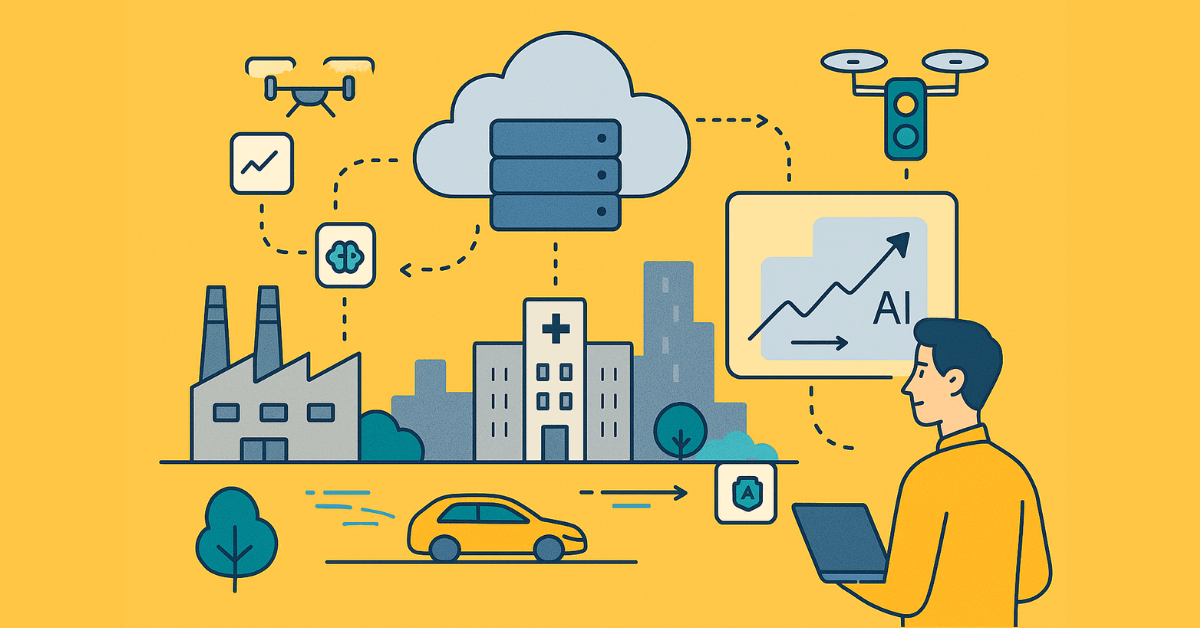In 2025, a quiet revolution is unfolding at the very edges of our digital world. Edge computing, once just a futuristic buzzword, is now becoming a foundational technology—transforming how data is processed, analyzed, and used across industries. From autonomous vehicles to healthcare monitors and smart factories, edge computing is making real-time intelligence not only possible, but necessary.
Table of Contents
As a tech enthusiast witnessing this shift firsthand, I’ve come to believe that edge computing isn’t just another advancement—it’s the next great leap in making technology truly responsive and context-aware.
What Is Edge Computing?
Edge computing refers to processing data closer to where it’s generated—at the “edge” of the network—rather than sending everything to a centralized data center or cloud. This could be on a smart device, local server, or even a micro data center within a factory or retail store.
The goal? Eliminate latency, reduce bandwidth costs, and allow instant, on-the-spot decision-making.
Imagine a self-driving car waiting for a cloud server to approve its next move. In edge computing, the decision happens locally, in milliseconds, right where it’s needed.
Why It Matters in 2025
Data volumes are skyrocketing. With billions of IoT devices, sensors, and smart applications flooding networks with information, centralized cloud infrastructures are struggling to keep up. This is where edge computing steps in.
According to a 2025 IDC report, more than 50% of new enterprise IT infrastructure is now deployed at the edge. And that number is rising fast. Why? Because industries can no longer afford to wait.
- Healthcare: Real-time diagnostics from wearables and connected medical devices can save lives when decisions are made instantly.
- Retail: Edge AI can personalize experiences in-store by analyzing customer behavior on the spot.
- Manufacturing: Predictive maintenance systems on factory floors now rely on edge devices to prevent breakdowns before they happen.
- Autonomous Systems: Drones, robots, and vehicles can’t afford latency—they need decisions made locally, right now.
Key Benefits of Edge Computing
Let’s break down why businesses and developers alike are investing in edge-based solutions:
- Ultra-Low Latency
Data is processed where it’s created, reducing round-trip times and enabling real-time response. - Bandwidth Optimization
Instead of sending all data to the cloud, only essential information gets transmitted—saving both cost and congestion. - Greater Privacy and Security
Sensitive data can stay local, reducing exposure to cyber threats during transmission. - Reliability in Remote Locations
Whether it’s oil rigs or rural farms, edge computing enables processing where connectivity may be limited.
How Edge Computing Works: A Closer Look
At the core of edge computing are devices like gateways, routers, smart sensors, and micro data centers. These edge nodes collect and process data locally, often using built-in AI models or lightweight algorithms.
For example, a smart surveillance camera doesn’t just record footage—it uses edge AI to detect motion, identify people, and trigger alerts, all without sending raw video to the cloud.
The real magic lies in edge + cloud synergy. Edge handles real-time processing; cloud manages storage, updates, and large-scale analytics. Together, they form a powerful hybrid architecture.
Real-World Applications Thriving on the Edge
Edge computing isn’t theory—it’s already reshaping industries:
- Smart Cities: Traffic lights powered by edge AI reduce congestion by adapting in real-time.
- Agriculture: Edge-enabled drones monitor crop health, enabling farmers to act immediately.
- Logistics: Fleet management systems use edge analytics to track and optimize vehicle performance.
- Energy: Smart grids use edge systems to balance supply and demand, even in microseconds.
What This Means for Developers and Entrepreneurs
This isn’t just for big tech. As developers, creators, and entrepreneurs, we now have access to powerful edge platforms like:
- NVIDIA Jetson: Ideal for AI at the edge
- Microsoft Azure IoT Edge: For deploying cloud intelligence to edge devices
- AWS Greengrass: For creating Lambda functions that run on edge hardware
- Google Coral: Optimized for ML applications on the edge
If you’re building an application that needs real-time responsiveness, data privacy, or operates in bandwidth-challenged environments, edge computing should be on your radar.
The Future Is Distributed
Edge computing is not about replacing the cloud—it’s about complementing it. As the digital ecosystem becomes more decentralized, edge technologies allow us to harness the full potential of real-time insights without sacrificing speed, security, or scalability.
Think of edge computing as the final mile of the internet—where ideas meet action, instantly.
Final Thoughts: The Edge Isn’t the End—It’s the Beginning
In this fast-evolving digital era, edge computing represents a turning point. It’s where data stops being a passive asset and becomes a real-time tool for decision-making. It’s where developers get to build faster, smarter, more resilient systems. And it’s where the future of computing becomes a lot more immediate.
Whether you’re an entrepreneur looking to innovate or a technologist trying to optimize, now’s the time to lean into the edge.
If this article helped connect the dots, subscribe to my blog for more deep dives into the tech that’s shaping our future—one edge at a time.





